inventions
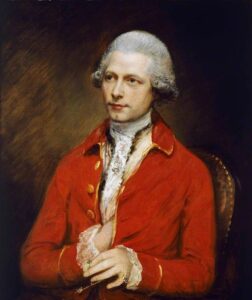
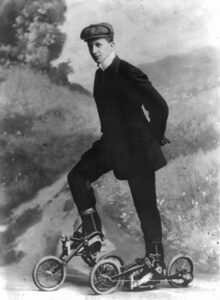 John Joseph Merlin, who was actually born Jean-Joseph Merlin, was a Belgian clockmaker, musical-instrument maker, and inventor. Born on September 6, 1735, in Huy, a town in what was then the Prince-Bishopric of Liège and is now in Belgium, Wallonia. His parents Maximilien Joseph Merlin (a blacksmith) and his wife Marie-Anne Levasseur. Merlin’s parents had married in 1732, and Merlin was the third of six children. Sadly, his mother died when he was eight. His father remarried at least once, to Marie Therese Dechesalle in 1743, and had another child, Charles Merlin. The family moved several times. From ages 19 to 25, Merlin lived in Paris, where he was involved in the Paris Academy of Sciences.
John Joseph Merlin, who was actually born Jean-Joseph Merlin, was a Belgian clockmaker, musical-instrument maker, and inventor. Born on September 6, 1735, in Huy, a town in what was then the Prince-Bishopric of Liège and is now in Belgium, Wallonia. His parents Maximilien Joseph Merlin (a blacksmith) and his wife Marie-Anne Levasseur. Merlin’s parents had married in 1732, and Merlin was the third of six children. Sadly, his mother died when he was eight. His father remarried at least once, to Marie Therese Dechesalle in 1743, and had another child, Charles Merlin. The family moved several times. From ages 19 to 25, Merlin lived in Paris, where he was involved in the Paris Academy of Sciences.
He moved to England in 1760. He began working with a man named James Cox in 1766, creating automatons such as Cox’s timepiece and the Silver Swan. He really took to the work, and by 1773 he was designing and making innovative keyboard instruments. In 1783, Merlin decided to do something new, so he opened Merlin’s Mechanical Museum in Princes Street, Hanover Square, London, which became a meeting-place for the gentry and nobility. At this point, Merlin expanded his horizons, and in addition to his clocks, musical instruments and automata, he invented inline skates…in the 1760s.
Merlin invented inline skates, which he called skaites. Merlin’s skaiteshad two wheels in the 1760s. The skaites were mentioned by Thomas Busby’s Concert Room and Orchestra Anecdotes (1805). The mention was not would have been exactly complimentary either, because it mentions an accident Merlin had while demonstrating his skaites.
“One of his ingenious novelties was a pair of skaites contrived to run on wheels. Supplied with these and a violin, he mixed in the motley group of one of Mrs Cowleys’ masquerades at Carlisle House; when not having provided the means of retarding his velocity, or commanding its direction, he impelled himself against a mirror of more than five hundred pounds value, dashed it to atoms, broke his instrument to pieces and wounded himself most severely.”
In case that all sounded a little confusing, let me simplify. Basically, Merlin didn’t practice using…or rather stopping, his skaites before he demonstrated them. His “stumbling” start aside, Merlin went on to invention other things, including a self-propelled wheelchair, a prosthetic device for “a person born with stumps only,” whist cards for the blind, a pump for expelling “foul air,” a communication system for summoning servants, a 
 pedal-operated revolving tea table, and a mechanical chariot with an early form of odometer. Merlin died in Paddington, London on 8 May 1803. His collection was sold to Thomas Weeks of Great Windmill Street. Weeks died in 1834, at which time Merlin’s creations were auctioned off with Weeks’ other possessions. One of Merlin’s automatons, a dancer with an automated bird, was bought at the auction by Charles Babbage for 35 pounds. He had seen it as a child at Merlin’s Mechanical Museum.
pedal-operated revolving tea table, and a mechanical chariot with an early form of odometer. Merlin died in Paddington, London on 8 May 1803. His collection was sold to Thomas Weeks of Great Windmill Street. Weeks died in 1834, at which time Merlin’s creations were auctioned off with Weeks’ other possessions. One of Merlin’s automatons, a dancer with an automated bird, was bought at the auction by Charles Babbage for 35 pounds. He had seen it as a child at Merlin’s Mechanical Museum.
 Not many people these days have heard of Hedy Lamarr, but I have heard of her, because she was an actress in my parents’ era. It goes without saying that Hedy Lamarr was beautiful…by any standard. Hedy Lamarr was a star in the 1930s and 1940s, starring in some well known movies including Boom Town with Clark Gable and Samson and Delilah with Victor Mature. While she’s certainly famous because of her acting career, she didn’t make any big world changes because she starred in some old movies. Instead, Hedy Lamarr had a pastime that did change the world. You wouldn’t know it…or certainly you wouldn’t expect it…but in her spare time Hedy Lamarr liked to work on her inventions. Seriously, who would have thought that?
Not many people these days have heard of Hedy Lamarr, but I have heard of her, because she was an actress in my parents’ era. It goes without saying that Hedy Lamarr was beautiful…by any standard. Hedy Lamarr was a star in the 1930s and 1940s, starring in some well known movies including Boom Town with Clark Gable and Samson and Delilah with Victor Mature. While she’s certainly famous because of her acting career, she didn’t make any big world changes because she starred in some old movies. Instead, Hedy Lamarr had a pastime that did change the world. You wouldn’t know it…or certainly you wouldn’t expect it…but in her spare time Hedy Lamarr liked to work on her inventions. Seriously, who would have thought that?
World War II began in 1939, but after the Japanese attacked Pearl Harbor on December 7, 1941, the United States entered the war. By 1942, Lamarr was at the height of her acting career. Still, like many patriotic Americans, she wanted to help in the war effort. She could have gone in as a nurse, or something, but she had something else in mind. Hedy Lamarr wanted to help the Allies come up with a communications system that couldn’t be intercepted by enemies. Now, I can only imagine how that would have gone over in an era where woman were thought not to understand the ways of war. So she and her friend, composer George Antheil, patented an idea for something they called the “Secret Communications System.” It was a system that would change radio frequencies in a per-programmed method. I hadn’t heard of such a method, although I suppose others have. If someone was listening…and the enemy was always trying to listen, they would only hear snippets before it changed to a different frequency. It sounds logical, but ultimately, the military didn’t end up using the system.
Flash forward a few decades, and you will find that Lamarr and Antheil’s patent became really important because it was a cheap and effective way to create security in new emerging technologies like military communication, cellular phones, and WiFi. What the military couldn’t use effectively in World War II, became important part of modern-day communication, and something most of us couldn’t do without…especially in the an 
![]() middle of a global pandemic. To look at her, Hedy Lamarr would have instantly been classified as a pretty girl, but most likely with out a head for mathematics or science…especially not in the field of electronics, but that classification would have proved very wrong. Hedy Lamarr had it all…looks and brains. Her contributions to modern-day technology prove that. As for Lamarr, her film career cooled down in the 1950s and her last movie was released in 1958. She became reclusive in her later life and passed away on January 19, 2000. She was 86.
middle of a global pandemic. To look at her, Hedy Lamarr would have instantly been classified as a pretty girl, but most likely with out a head for mathematics or science…especially not in the field of electronics, but that classification would have proved very wrong. Hedy Lamarr had it all…looks and brains. Her contributions to modern-day technology prove that. As for Lamarr, her film career cooled down in the 1950s and her last movie was released in 1958. She became reclusive in her later life and passed away on January 19, 2000. She was 86.
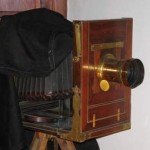 Over the centuries, we have seen many changes in how people preserved their images in picture. From the days of hieroglyphics to the days of digital photography, much has changed in the world of what we now call photography. In fact, many people these day never print a photograph at all, they simply view it, share it, and save it online. Such was not always the case. It use to be that to have a picture taken was an expensive venture, and one that was not done often. Then as photography became more and more common, pictures became a common thing. These days with digital cameras, taking pictures is commonplace, and people even take selfies because they can, and it’s something new and fun.
Over the centuries, we have seen many changes in how people preserved their images in picture. From the days of hieroglyphics to the days of digital photography, much has changed in the world of what we now call photography. In fact, many people these day never print a photograph at all, they simply view it, share it, and save it online. Such was not always the case. It use to be that to have a picture taken was an expensive venture, and one that was not done often. Then as photography became more and more common, pictures became a common thing. These days with digital cameras, taking pictures is commonplace, and people even take selfies because they can, and it’s something new and fun.
The original cameras were big, bulky, and expensive. One avid photographer, George Eastman wanted to bring the world of photography to the masses. George worked on his project until he perfected a Kodak camera that 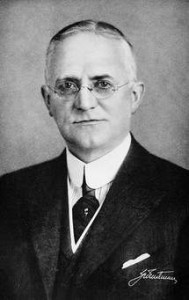 used a roll of dry, transparent, and flexible, photographic film, which he had also invented. That was on September 4, 1888, and both cameras and film…or the lack thereof, have come a long way since then. Still, it is men like George Eastman who had a dream to bring photography into the hands of the masses, who paved the way for the amazing abilities we have today. To me, pictures are gold…pure gold. They tell of at time we couldn’t have known about. All we have is the stories that history has told, and the pictures to show us what it was like.
used a roll of dry, transparent, and flexible, photographic film, which he had also invented. That was on September 4, 1888, and both cameras and film…or the lack thereof, have come a long way since then. Still, it is men like George Eastman who had a dream to bring photography into the hands of the masses, who paved the way for the amazing abilities we have today. To me, pictures are gold…pure gold. They tell of at time we couldn’t have known about. All we have is the stories that history has told, and the pictures to show us what it was like.
In 1883, Eastman announced the invention of photographic film in rolls, but he had no way to use it then. Kodak the company was born in 1888 when the first Kodak camera entered the market. The camera came the Kodak camera could easily be carried and handheld during its operation. The camera came pre-loaded with enough film to take 100 pictures. “You press the button, we do the rest” promised George Eastman in 1888 with this advertising slogan for his Kodak camera. George Eastman wanted to simplify photography and make it available to everyone, not just trained photographers. He had a dream. He knew that there was no reason that everyone could not be a photographer. All that was needed was the right equipment. After the shots in the new camera were taken, the whole camera was returned to the Kodak company in Rochester, New York. There, the film was developed, prints were made, and new film was  inserted. Then the camera and prints were returned to the customer, so they could take more pictures.
inserted. Then the camera and prints were returned to the customer, so they could take more pictures.
I have to think that this was considered such an amazing invention. I can picture just how excited everyone was. It must have felt like we felt when men walked on the moon for the first time. Like something out of this world. Or maybe that is just the way I would have felt if I were the me of today, seeing the amazing new technology of that day. I think George Eastman must have been an amazing man of incredible vision. So many memories have been preserved because of him. George Eastman was one of the first American industrialists to employ a full-time research scientist. He wanted the best people to do the job. Later, Eastman and his associate would perfected the first commercial transparent roll film which made possible Thomas Edison’s motion picture camera in 1891. It’s funny that something that changed so many things in our world, is now almost obsolete. Digital cameras have replaced all that, and now we are able to save our memories in a whole new way. It was George Eastman who paved the way.
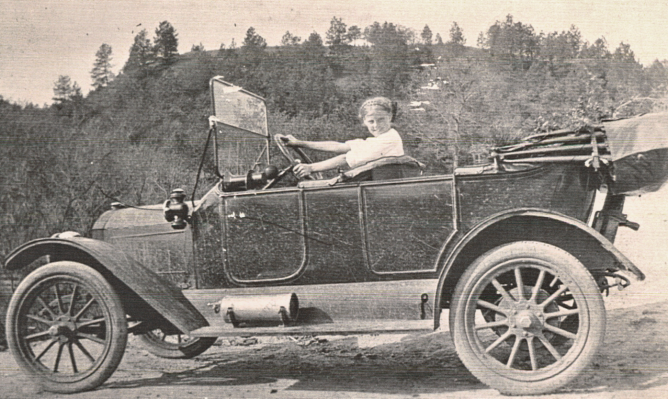 When the automobile first came out, very few people had one. Like most things when they first come out, they were first thought of as frivolous. If people could have seen the world as we see it today, they would not only have been shocked, but they would have understood the need to have one of those new fangled contraptions. Nevertheless, like any new invention, they soon caught on, and more people traded off their wagon for the automobile. It was a slow process, however, and many people thought the ones who had the first automobiles were a bit snooty, or that they were using the automobile as a status symbol…and maybe to a degree they were. It’s like that today too. First it was the computer, then the laptop, then the cell phone, then the smart phone, then the iPad…and the list goes on, depending on what you are into.
When the automobile first came out, very few people had one. Like most things when they first come out, they were first thought of as frivolous. If people could have seen the world as we see it today, they would not only have been shocked, but they would have understood the need to have one of those new fangled contraptions. Nevertheless, like any new invention, they soon caught on, and more people traded off their wagon for the automobile. It was a slow process, however, and many people thought the ones who had the first automobiles were a bit snooty, or that they were using the automobile as a status symbol…and maybe to a degree they were. It’s like that today too. First it was the computer, then the laptop, then the cell phone, then the smart phone, then the iPad…and the list goes on, depending on what you are into.
When the automobile came out, they scared the horses, who had to use the same roads, and they scared the people too, because the seemed to have no controls. They weren’t sure the machine could be stopped. They thought it might be a death trap. And it can be, if it is misused, but as we all know, it can also be a very useful tool in our everyday lives. The problem the people of those early years had was that it was an unknown. That made it much more scary. They also felt that what they had was good enough, which is the same as many people today think too.
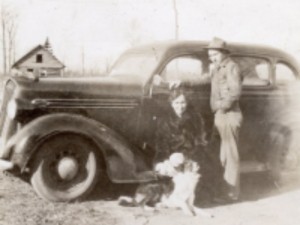
As the years went by though, the car became a common thing. Everyone has one these days…or almost. We are so used to cars that we think nothing of our 16 year old children driving them. We know how they work…in fact, most 15 year olds know how they work. As commonplace as they are, I think most people still feel like they are a status symbol, and we try to have one that reflects who we are. Nevertheless, when you look at the old pictures of people with those older cars, you could see that they really knew the value of that machine, and they didn’t take it for granted like we do today. Status symbol…yes, then and now, but maybe it meant a little more to them then.

